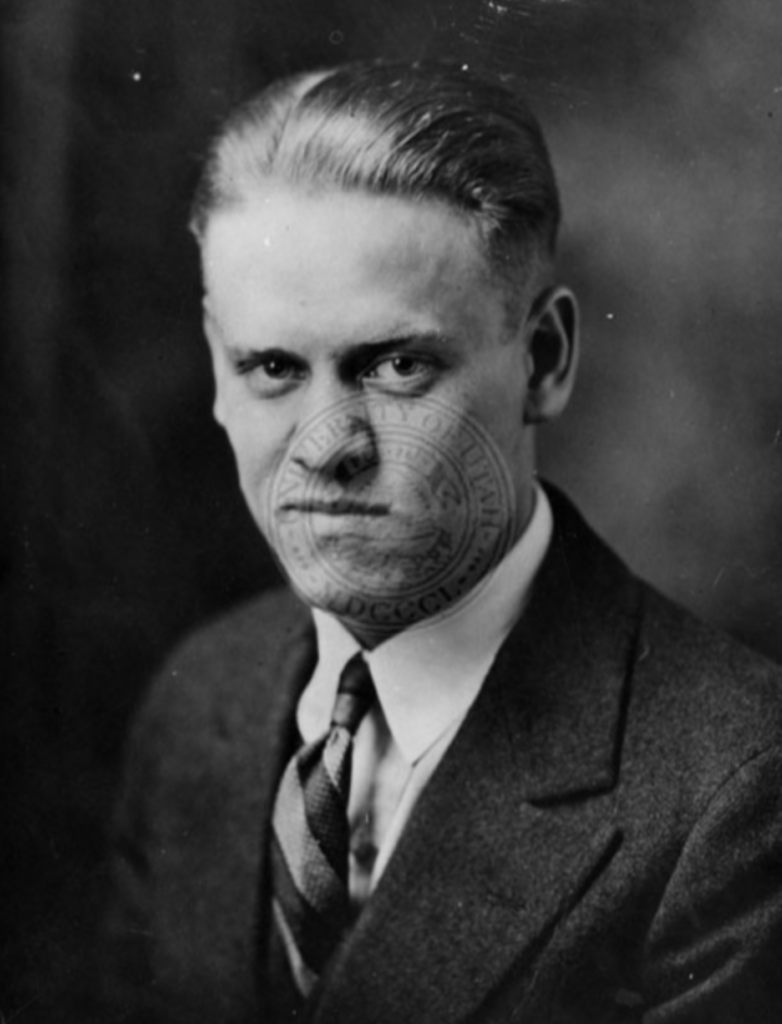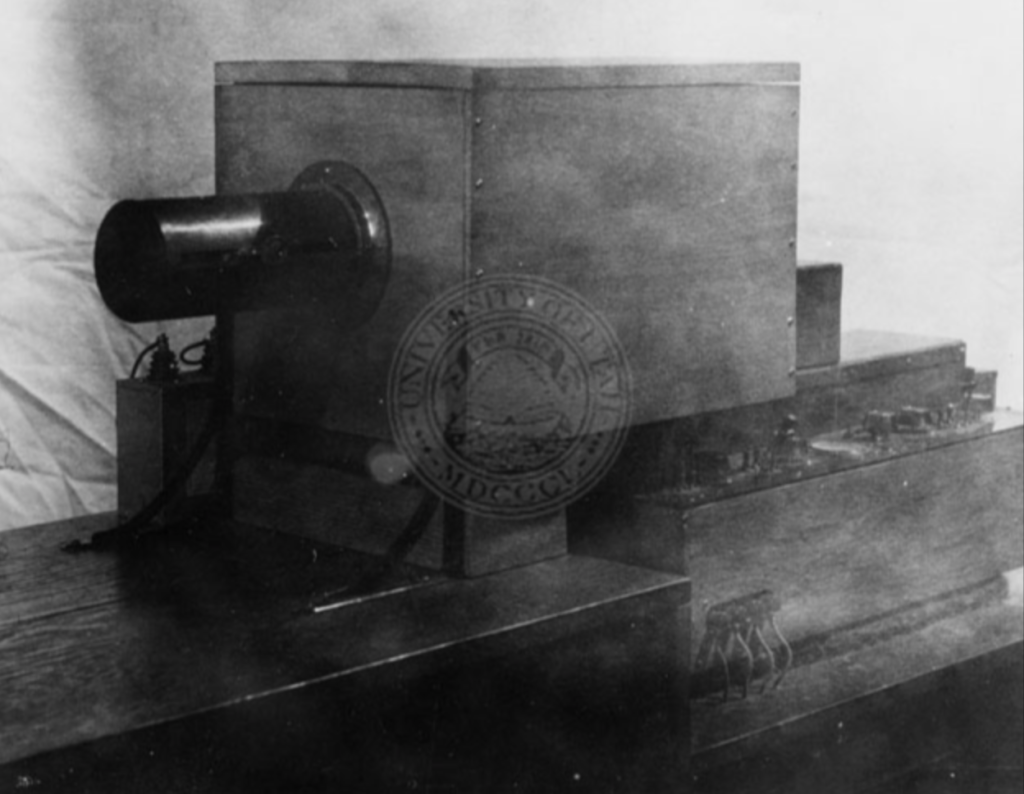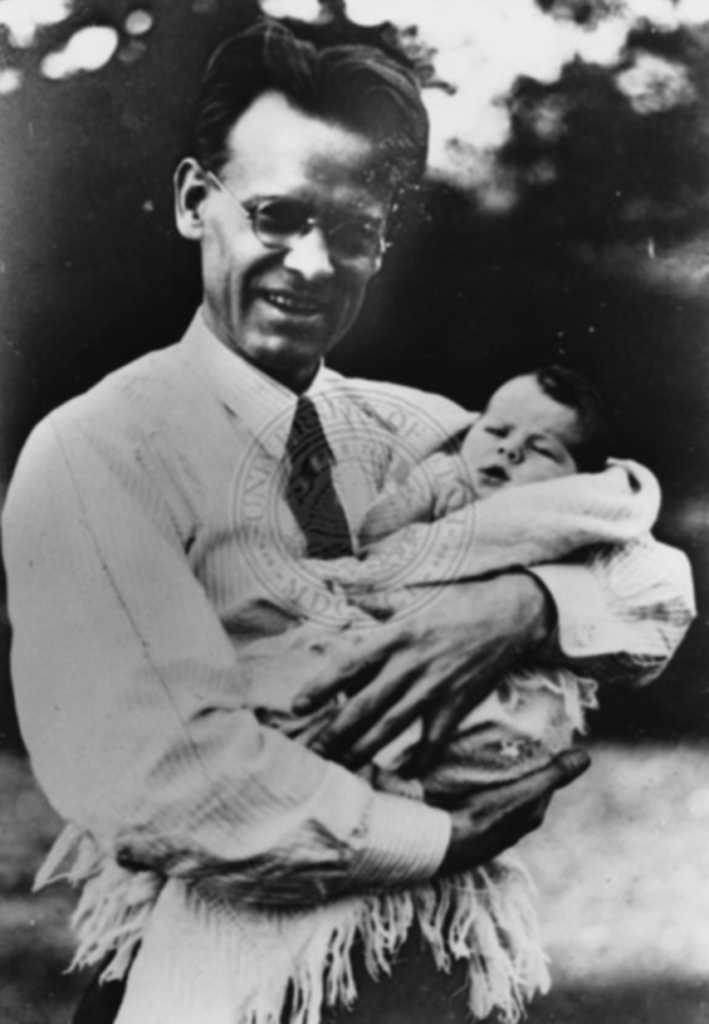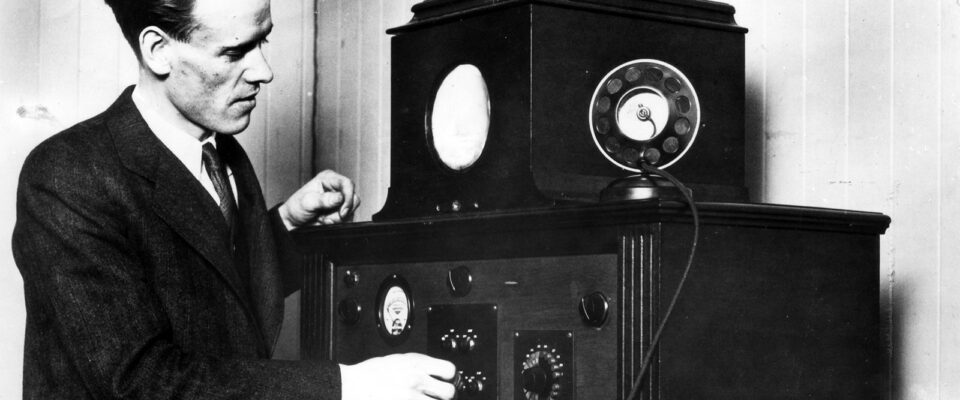Overview
In the twenty-first century, people often take their phones, laptops, and other forms of technology for granted. Yet, not too long ago, all people had for technology was the radio and the daily newspaper was their entertainment. The 1920s, a decade of extreme social, political, and economic change, also brought with another huge change. The way in which people consumed entertainment, news, and various other forms of media would drastically change in this decade. Yet, without a young boy from Utah, Philo Farnsworth, the 1920s may have never seen the birth of the television as we know it today.
Philo Farnsworth

Philo Taylor Farnsworth was born on August 19, 1906 in southwestern Utah.1Neil Postman, "Philo Farnsworth," Time Magazine online, March 29, 1999. Most of his childhood was spent growing up in the community settled by his grandfather. In the small, log-structured home that Farnsworth spent his childhood in, there was nothing but a few modern convinces to make everyday life easier.2Stephanie McPherson, TV's Forgotten Hero: The Story of Philo Farnsworth, Minnesapols: Carolrhoda Books, October 1, 1996, 8. His parents, Lewis and Serena, had very little money and as a result, Farnsworth’s childhood home did not have electricity.3Stephanie McPherson, TV's Forgotten Hero: The Story of Philo Farnsworth, Minnesapols: Carolrhoda Books, October 1, 1996, 8, 11. However, when he was just twelve years old, Farnsworth’s family moved to a spacious ranch in Rigby, Idaho.4Neil Postman, "Philo Farnsworth," Time Magazine online, March 29, 1999. Farnsworth’s family would be moving in with extended family but Farnsworth did not seem to mind, especially since his new home had electricity.5Stephanie McPherson, TV's Forgotten Hero: The Story of Philo Farnsworth, Minnesapols: Carolrhoda Books, October 1, 1996, 15.
The young boy had always dreamed of becoming an inventor but it was on the ranch that his obsession with electronic components began.6Neil Postman, "Philo Farnsworth," Time Magazine online, March 29, 1999. At only fifteen, Farnsworth begged his high school chemistry teacher to give him special instruction and allow him to audit a senior-level class.7Neil Postman, "Philo Farnsworth," Time Magazine online, March 29, 1999. Mr. Tolman agreed and quickly realized that the young Farnsworth had an incredible gift, his intelligence. Tolman was not the only high school teacher to see Farnsworth’s genius. After only two years of high school, Farnsworth began his academic career at the Brigham Young University.
For many students, the transition from high school to college can be confusing and daunting. Yet for Farnsworth, the transition was almost seamless. The young boy took content-heavy college courses and focused on his main interest, electronics.8Neil Postman, "Philo Farnsworth," Time Magazine online, March 29, 1999. While taking classes, Farnsworth played around with several ideas for a completely electronic television system.9Neil Postman, "Philo Farnsworth," Time Magazine online, March 29, 1999. Unfortunately, the college career of the ambitious Farnsworth was cut short. At the end of his sophomore year, Farnsworth’s father passed away, forcing him to leave Brigham Young University and return home.10Neil Postman, "Philo Farnsworth," Time Magazine online, March 29, 1999. Although his time in school was over, Farnsworth never stopped experimenting with electronic components and learning from them.
The Dream
Evidently, Philo Farnsworth was not the first person to imagine the happenings of an electric television. As there were several others working hard to finish the exact same objective, a fully functioning electronic television. For example, Vladimir Zworykin, a Russian electrical engineer, had the skills, intelligence, and dreams for the project.11Neil Postman, "Philo Farnsworth," Time Magazine online, March 29, 1999. However, he was never successful in even building an all-electronic television prototype. The problem many inventors had, including Zworykin, was that they could not find a way to transmit the image data without a single mechanical aspect.12Kat Eschner, "The Farmboy Who Invented the Television," Smithsonian Magazine online, August 28, 2017. Unlike the others, Farnsworth was able to figure out how to create a fully functioning electronic television. Still, there was much in the way between Farnsworth and his goal.
At the same time that Farnsworth and the others were trying to develop an an electronic television, Farnsworth was developing as a person. Being so young, there were many other matters that preoccupied the young inventor. Farnsworth fell in love with a young women named Elma Gardner.13"Elma Farnsworth, 98; Aided Husband in Developing Television," Los Angeles Times online, May 5, 2006. Not too long after meeting, the two got married in 1926 in Utah.14Elma Farnsworth, 98; Aided Husband in Developing Television," Los Angeles Times online, May 5, 2006. At the time, Farnsworth was only twenty years old and had much of his life as an inventor ahead of him. After a year of being married, the couple moved from Utah to San Francisco. This way, Farnsworth would be closer to the motion-picture community and have enough space and help to work on his inventions.15Kat Eschner, "The Farmboy Who Invented the Television," Smithsonian Magazine online, August 28, 2017. Once settled in his loft “laboratory” in San Francisco, Farnsworth, with the help of his wife, a few assistants, and a couple of wealthy investors, got to work on the invention that would forever change his life.
The Television

As previously stated, Farnsworth was not the only individual to think of a fully electronic television. Yet, he was the first person to build a prototype and have successful transmission. On September 7, 1927, Farnsworth had his first successful transmission.16"Elma Farnsworth, 98; Aided Husband in Developing Television," Los Angeles Times online, May 5, 2006. He sent an image of a horizontal line to a receiver in another room, where the same horizontal line was displayed on a television screen.17Elma Farnsworth, 98; Aided Husband in Developing Television," Los Angeles Times online, May 5, 2006. It was with his wife and assistant that Farnsworth watched the very first electronic television picture to ever be transmitted.
While his invention changed not only his life, but also the course of the 1920s, it also brought Farnsworth a great deal of pain. Zworykin, the Russian engineer, had a connection to the Radio Corporation of America, a powerful company at the time.18Neil Postman, "Philo Farnsworth," Time Magazine online, March 29, 1999. Zworykin wanted the fame of being the inventor of the electronic television and the Radio Corporation of America did not want to pay Farnsworth for the right to manufacture the television sets that he had invented.19Neil Postman, "Philo Farnsworth," Time Magazine online, March 29, 1999. Thus, making the duo a perfect evil pair. However, not everything went as Zworykin and the Radio Corporation of America had hoped. Farnsworth put up a fight and after an intense legal battle, the the U.S. Patent Office awarded priority of the invention to Farnsworth in 1934.20Neil Postman, "Philo Farnsworth," Time Magazine online, March 29, 1999. Tragically, his victory was short lived.

A Tragic Ending
Shortly after the second World War, Farnsworth’s patents expired and the Radio Corporation of America was quick to move in and buy the rights to them. As a result, Zworykin and the chief of the Radio Corporation of America took credit for Farnsworth’s work.21Neil Postman, "Philo Farnsworth," Time Magazine online, March 29, 1999. They even went as far as declaring themselves the true inventors of the television.22Neil Postman, "Philo Farnsworth," Time Magazine online, March 29, 1999. After losing all of his hard work, Farnsworth spiraled into a deep depression. He had to be admitted into several hospitals where he endured shock therapy because of his nervous breakdowns.23Neil Postman, "Philo Farnsworth," Time Magazine online, March 29, 1999. Farnsworth’s fragile state led him to develop a drinking problem and as if life could not be anymore unfair to the “Father of the Television”, Farnsworth’s new home in Maine burned to the ground in 1947.24Philo Farnsworth," Time Magazine online, March 29, 1999.
After almost an entire lifetime of injustice and defeat, Philo Farnsworth, passed away in March of 1971 in a Salt Lake City hospital.25"Philo T. Farnsworth, a Pioneer In Design of Television, Is Dead," The New York Times online, March 13, 1971. Farnsworth was sixty-four years old when he suffered cardiac arrest following a choking spell.26Philo T. Farnsworth, a Pioneer In Design of Television, Is Dead," The New York Times online, March 13, 1971. Farnsworth left behind his wife, his son, and 165 patents in his name when he passed.27Philo T. Farnsworth, a Pioneer In Design of Television, Is Dead," The New York Times online, March 13, 1971. To this day, Farnsworth struggles to receive the recognition he deserves as the true inventor of the electronic television.
Significance
Philo Farnsworth and his natural genius were instrumental to the 1920s. Without his ideas and knowledge on electronic components, the current hundred million televisions in the United States could look very different. Not only that, but when Farnsworth’s invention was first rolled out in the late 1920s, it drastically changed people’s sense of the world.28Andrew Anthony, "A History of Television, the Technology that Seduced the World - And me," The Guardian online, September 7, 2013. Being able to physically see politicians, celebrities, current news, sports games, and anything else one could imagine transformed the world forever. Much more than before, the public began to form opinions on matters based on how it looked. Fashion trends changed to emulate what was seen on the television and gory scenes of war could bring the viewer to the battlefield.

However, Farnsworth’s legacy is more than just his invention of the modern television. Farnsworth’s story is one that demonstrates both the embodiment and downfall of the golden American dream. In his lifetime, Farnsworth accomplished what others were struggling to complete. He was able to successfully create the world’s first completely electronic television. Yet, he barely received credit for his work because of a large company with money and power. His life’s work was stolen from him.
While many people like to view the 1920s as a decade of good times with jazz music in the background, there was also a lot of corruption and dishonestly. It is important to recognize that what the Radio Corporation of America did to Farnsworth happened to many other hardworking Americans.
Why Philo Farnsworth and the Invention of Television?
After a basic search on the invention of the television, it became obvious that its history was complex and confusing. After a little more digging, I found the true answer to the mystery and realized that even to this day, Farnsworth receives little, if any, recognition for his work towards the electronic television. Although more people are beginning to acknowledge Farnsworth, I wanted to give him his moment in history.
Bibliography
- Anthony, Andrew. “A History of Television, the Technology that Seduced the World – And me.” The Guardian online. September 7, 2013.
- “Elma Farnsworth, 98; Aided Husband in Developing Television.” Los Angeles Times online. May 5, 2006.
- Eschner, Kat. “The Farmboy Who Invented the Television.” Smithsonian Magazine online. August 28, 2017.
- Featured Image: J. Willard Marriott Digital Library at the University of Utah. “P.T. Farnsworth with his television receiver-1920 or 30.” Accessed March 2021.
- McPherson, Stephanie. TV’s Forgotten Hero: The Story of Philo Farnsworth. Minnesapols: Carolrhoda Books, October 1, 1996.
- “Philo T. Farnsworth, a Pioneer In Design of Television, Is Dead.” The New York Times online. March 13, 1971.
- Postman, Neil. “Philo Farnsworth.” TIME Magazine online. March 29, 1999.

Rachel is a junior at Ramapo College of New Jersey taking Discovering Digital History in the Spring of 2021. She is studying History and Education and is looking forward to becoming a teacher after graduating.

